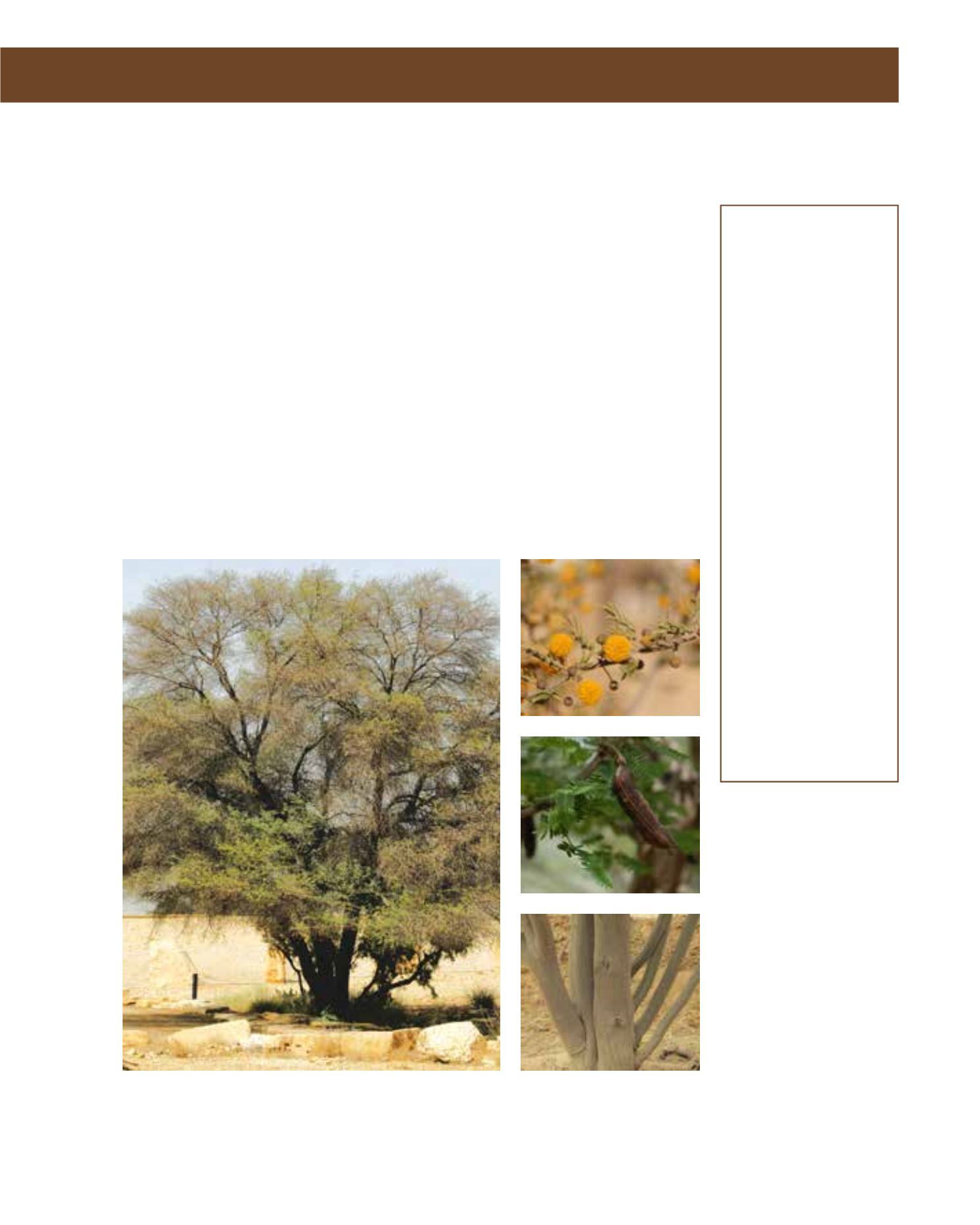

GENERAL
Origin
:
sub-tropical,
tropical
Vigour
:
fairly fast
growing
Humidity
:
very arid, semi-
arid
Propagation :
sowing and
pricking out
Maintenance :
low
CONDITIONS
Urban climate :
resistant
Dessication :
resistant
Stagnant water :
vulnerable
Irrigation
:
low
Salinity/ppm :
very high (9000
ppm)
Hardiness
:
-6°C
SHAPE
Type
:
tree
Height
:
4 m-6 m
Spread
:
6 m-8 m
Foliage
:
semi-evergreen,
evergreen
FLOWER
Colour
:
light yellow
Size
:
1 cm
Period
:
March - May
Smell
:
pleasantly
scented, flower,
sweet
FRUIT
Type of fruit :
pod
Fruit size
:
4 cm - 10 cm
Many of the acacias have fragrant flowers, but the beautiful scent of the sweet acacia in the gardens
of Arriyadh in spring is unforgettable. A. farnesiana (known in Arabic as anbar or futnah) is a
vase-shaped, small, thorny tree, often with multiple trunks and a spreading rounded crown. Its
lacy leaves are evergreen in mild winters, but semi-deciduous after frost. The intensely fragrant,
yellow puffball flowers emerge over a long period to open in Arriyadh in the spring. Native to the
countries surrounding the Caribbean, the tree‘s blossoming can, however, be spoiled by late hard
frosts. It has landscape value as an accent tree, especially in small gardens or patios, but can also
be planted as a roadside tree, along pedestrian paths or as a background screen. Unfortunately, it
has become invasive in some countries. A. farnesiana is extensively cultivated in southern France.
A perfume is distilled from the flowers. Amongst other uses, the world over, the tree’s seed pods
and bark are used for tanning and dying leather. Bark, leaves and roots are used for medicinal
purposes. Sweet acacia honey is much prized. Gum exuding from the trunk can also be used
like gum arabic. Trees are planted as fences and to check erosion. Its wood is hard and durable.
Tolerant of most soils, it needs moisture to develop well during the summer and will respond
well to deep watering. The tree is best propagated by scarifying ripe seeds and should be pruned
regularly to maintain good shape and to remove any dead branches caused by cold winters.
24
Acacia farnesiana,
Mimosaceae
Sweet Acacia,
anbar, futnah
















